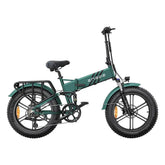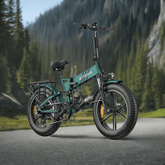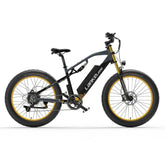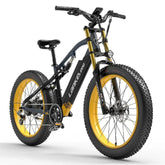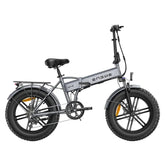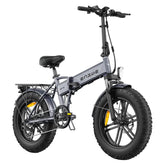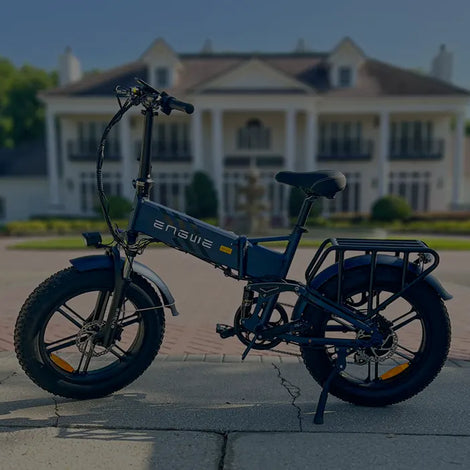Are you tired of watching your hard-earned money vanish into the abyss of rising gas prices and enduring never-ending traffic snarls during your daily commute? Embrace the e-mobility revolution, a sustainable method of transport, and prepare for an exhilarating journey ahead!
Today, we delve headfirst into the captivating realm of e-mobility, pitting the speed of e-bikesPit the e-mobility trend of an e-bike vs e-scooter against the agility of electric bikes vs electric scooters. Envision this as a thrilling showdown between transportation titans, meticulously weighing the pros and cons in terms of cost, convenience, environmental impact, speed, and safety.
By the conclusion of this insightful analysis, you will be equipped with the e-mobility knowledge necessary to make a well-informed decision regarding your commuter superhero. So, don your helmets, recharge those batteries, and let's ignite this captivating debate!
Let's commence by exploring the advantages of both e-scooters and e-bikes.
Benefits of E-Bikes for Commuting
E-bikes elevate daily commutes with their swiftness, efficiency, and the added bonus of exercise, positioning them as a Health Impact champion. They outpace conventional automobiles, navigating congested streets or hilly terrains with ease, saving precious time. Furthermore, e-bikes foster physical health, benefiting your cardiovascular system and muscles, while simultaneously curbing carbon emissions and air pollution, thereby safeguarding the environment. Despite an initial investment, their long-term merits, akin to those of e bikes scooters, more than compensate for it, rendering e-bikes a cost-effective mode of daily transportation.
Benefits of E-Scooters for Commuting
E-scooters present a swift and convenient solution for urban dwellers, carving a niche in the electric scooters and bikes market. Their compact size effortlessly maneuvers through crowded streets, mitigating parking and storage dilemmas. Ideal for shorter commutes, e-scooter bike options obviate the need for larger vehicles and contribute to traffic alleviation. What's more, they offer a cost-efficient alternative, with lower upfront costs, reduced insurance expenses, and minimal fuel consumption, making daily commuting a budget-friendly endeavor.
Key Distinctions Between E-Bikes and E-Scooters
E-bikes and e-scooters diverge significantly in terms of speed and range.
Speed and Range
When considering an e-bike vs e-scooter, e-bikes boast superior speeds and longer ranges, making them ideal for extended commutes or journeys. Conversely, when comparing an ebike vs e scooter, the latter is tailor-made for shorter trips, featuring moderate speeds and enhanced portability.
Design and Form Factor
Electric bikes and scooters each have their unique appeal. E-bikes adopt the familiar appearance of traditional bicycles, complete with frames, pedals, and handlebars, available in various styles, including mountain, city, and folding models. Meanwhile, e-scooters, part of the e bike and scooter family, flaunt a compact and streamlined design, ensuring nimble maneuverability in urban settings.
Stability and Ease of Use
E-bikes, with their optimal Riding Position and higher Ground Clearance, offer a stable, balanced riding experience, bolstering rider confidence even on uneven terrain. In contrast, e-scooters may necessitate a learning curve to master their balance and steering nuances. However, once riders are acclimated, e-scooters provide a nimble, agile ride that's hard to match.
Legal Considerations
When selecting between e-bikes and e-scooters, it's crucial to consider legal frameworks, such as EAPC regulations and the necessity for e-bike insurance or e-scooter insurance. These rules can differ widely, with e-bikes often regarded similarly to conventional bicycles, while e-scooters might face more stringent restrictions or licensing requirements due to their motorized nature. Understanding local laws is essential for a hassle-free and safe commute.
Factors to Ponder When Selecting Between E-Bikes and E-Scooters for Commuting
Several pivotal factors should be weighed when deciding between e-bikes and e-scooters for your daily commute. A thorough evaluation of these elements, with a focus on e-mobility and electric mobility solutions, will guide you to a choice that best fits your personal needs and commuting style.
Daily Commuting Distance and Terrain
Consider the distance of your daily commute and the types of terrain you'll face. Electric bikes and scooters each have their strengths, with e-bikes being the superior choice for extended ranges and longer distances, while e-scooters excel in shorter, urban commutes. If your route includes steep inclines or rugged paths, an electric mountain bike like the Shengmilo MX05, with its full-suspension system, would be an excellent choice. Conversely, e-scooters are more suited for flat, paved cityscapes.
Personal Preference and Comfort
Reflect on your personal preferences and comfort, particularly the Riding Position, when choosing your mode of transport. E-bikes mimic the riding experience of traditional bicycles, offering both upright and sporty positions, while e-scooters vary, providing either standing or seated options depending on the model. Consider which riding style aligns with your comfort and enjoyment for your daily journeys.
Portability and Storage Solutions
Assess your needs for portability and storage space, keeping in mind the Weight of the vehicle. E-bikes, generally heavier and bulkier, may challenge portability, especially when dealing with stairs or fitting them into a bike shed or small spaces. In contrast, e-scooters, with their inherent compactness, offer greater ease of transport and storage. E-scooters, known for their compactness and lightness, stand out for being effortlessly portable and convenient for storage, even in small apartments or on public transport. This contrasts with electric bikes and scooters that are bulkier. E-scooters become a prime choice for those who value the ability to easily transport or store their e-bike and scooter during their commute.
Safety Features and Regulations
Ensure the Safe Use of your e-bike or e-scooter by familiarizing yourself with their safety features and the local Product Safety regulations. These vehicles are typically outfitted with essential safety components such as lights, horns, mirrors, and advanced braking systems. Moreover, it's crucial to understand the specific rules in your area, including helmet laws, that govern the operation of e-bikes and e-scooters.
Shengmilo E-Bikes: Superior in Many Aspects
Shengmilo e-bikes stand head and shoulders above e-scooters in several key respects:
Enhanced Ease and Stability
Seasoned e-bike enthusiasts will find that the natural, upright Riding Position of our bikes promotes an ergonomic posture. This position also has a positive Health Impact, especially for your back.
Ample Carrying Capacity
Shengmilo e-bikes are adept at carrying additional Weight, from groceries to backpacks, and even your furry friends. Our robust frames and baskets are designed to manage heavy loads effortlessly. The Shengmilo electric cargo bike Big Dog is equipped with powerful e-bike motors and a rear rack engineered for significant payloads.
Unmatched Power and Range
Outclassing e-scooters, Shengmilo e-bikes deliver superior power and an extended range. With a Removable Battery and electric bike scooter capabilities, a Shengmilo e-bike on premium settings can traverse up to 90 kilometers. The high-performance Samsung lithium-ion battery provides a high voltage of up to 48 volts and a substantial amperage of 17.5 Ah. This sets a new benchmark for battery-powered scooters.
FAQs (Frequently Asked Questions)
1. How Far Can You Go on the Shengmilo E-Bike?
Shengmilo e-bikes are engineered to achieve speeds of up to 42 km/h. They offer an exhilarating ride with optimal Wheels and Ground Clearance, making them perfect for both urban commuting and outdoor adventures.
2. Are Shengmilo E-Bikes Suitable for Trails and Bike Lanes?
Absolutely! Shengmilo e-bikes are incredibly versatile and adaptable, designed to excel on bike lanes, city streets, and even light trails. Their adaptability makes them an excellent choice for a variety of riding experiences. They seamlessly integrate the convenience of both bicycle scooter and scooters and bikes.
3. What Is the Battery Life of the Shengmilo E-Bike?
The Battery life of a Shengmilo E-Bike varies with terrain, speed, and assistance level. Typically, riders can expect a range of 50 to 90 kilometers on a single charge. This is thanks to the Removable Battery, providing reliable power for extended journeys without the worry of running low.
4. Are Shengmilo E-Bikes Suitable for Riders of All Ages and Fitness Levels?
Absolutely! Shengmilo E-Bikes are expertly crafted to cater to riders with no Age Limit, welcoming individuals of diverse ages and fitness levels. The bikes' adjustable power assist feature empowers you to customize your journey to your health preferences. It ensures a Health Impact that's positive and an enjoyable experience for every rider.
5. Do Shengmilo E-Bikes Cost More Than E-Scooters?
While e-scooters might tempt with lower price tags, it's crucial to consider the enduring value of Shengmilo E-Bikes. Not only do they boast superior durability, but they also come with lower operational costs and reduced maintenance fees over time. Additionally, investing in e-bike insurance can safeguard your purchase, making them a smart financial choice for the long haul.
In Conclusion
When it comes to electric mobility, e-bikes and e-scooters each present unique pros and cons for daily commuting. E-bikes stand out with their comfortable ride, versatility across different terrains and distances, and health-promoting attributes. They also contribute to a reduced carbon footprint, aligning with e-mobility goals. On the flip side, e-scooters shine with their compactness, suitability for short trips, and the convenience of parking and storage. Deciding between these sustainable transport options depends on personal preferences and commuting requirements, each enhancing daily travel while fostering a greener environment.

